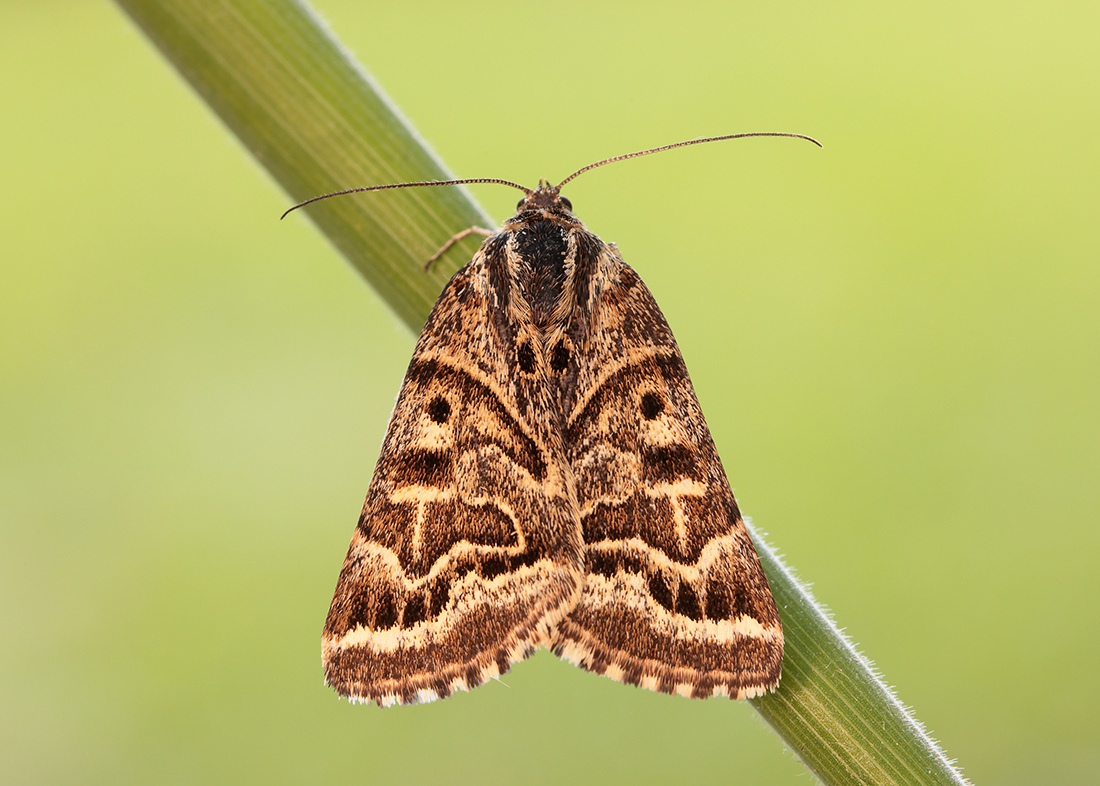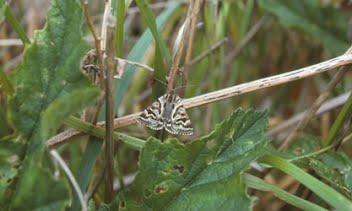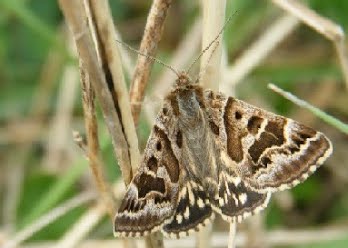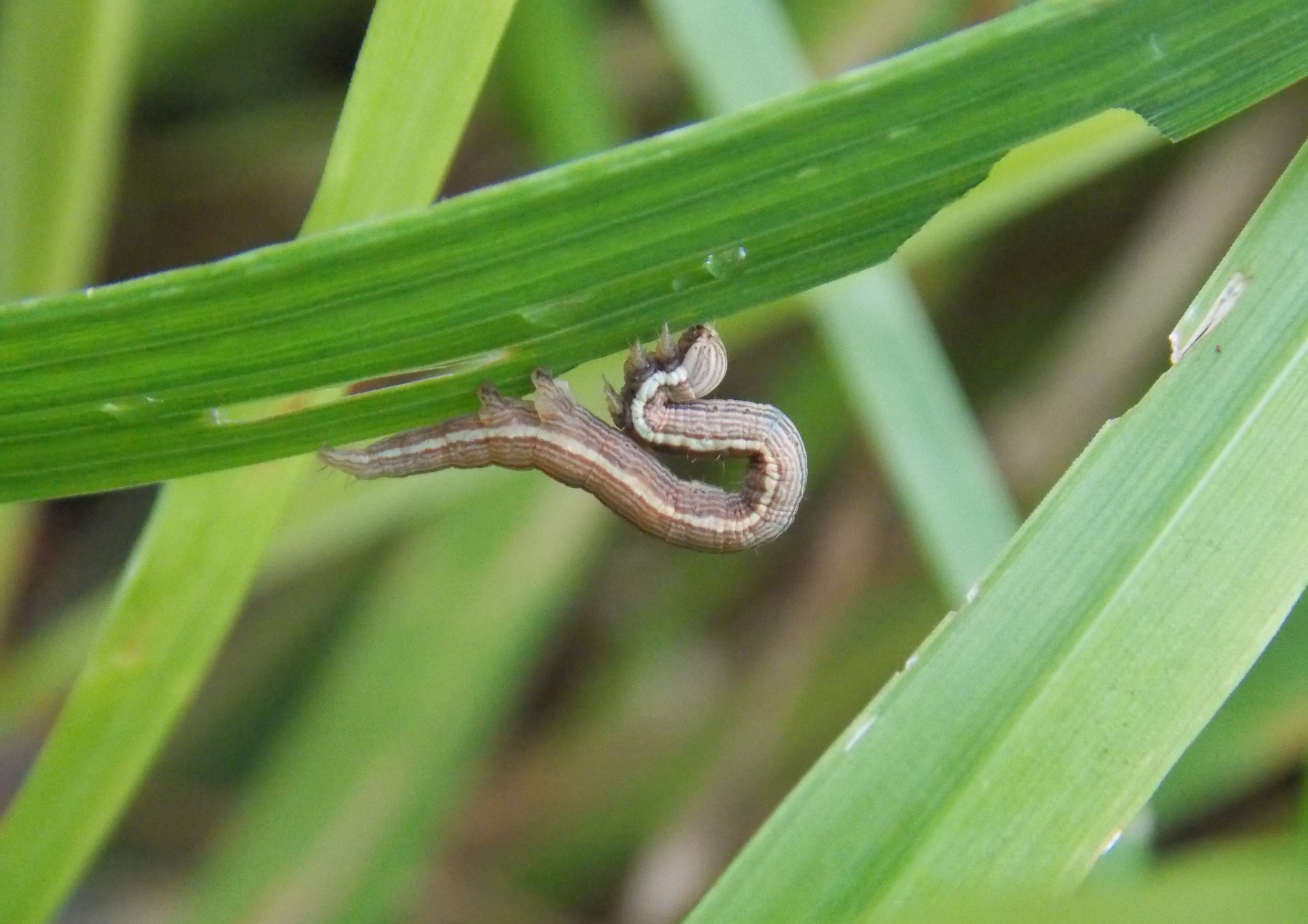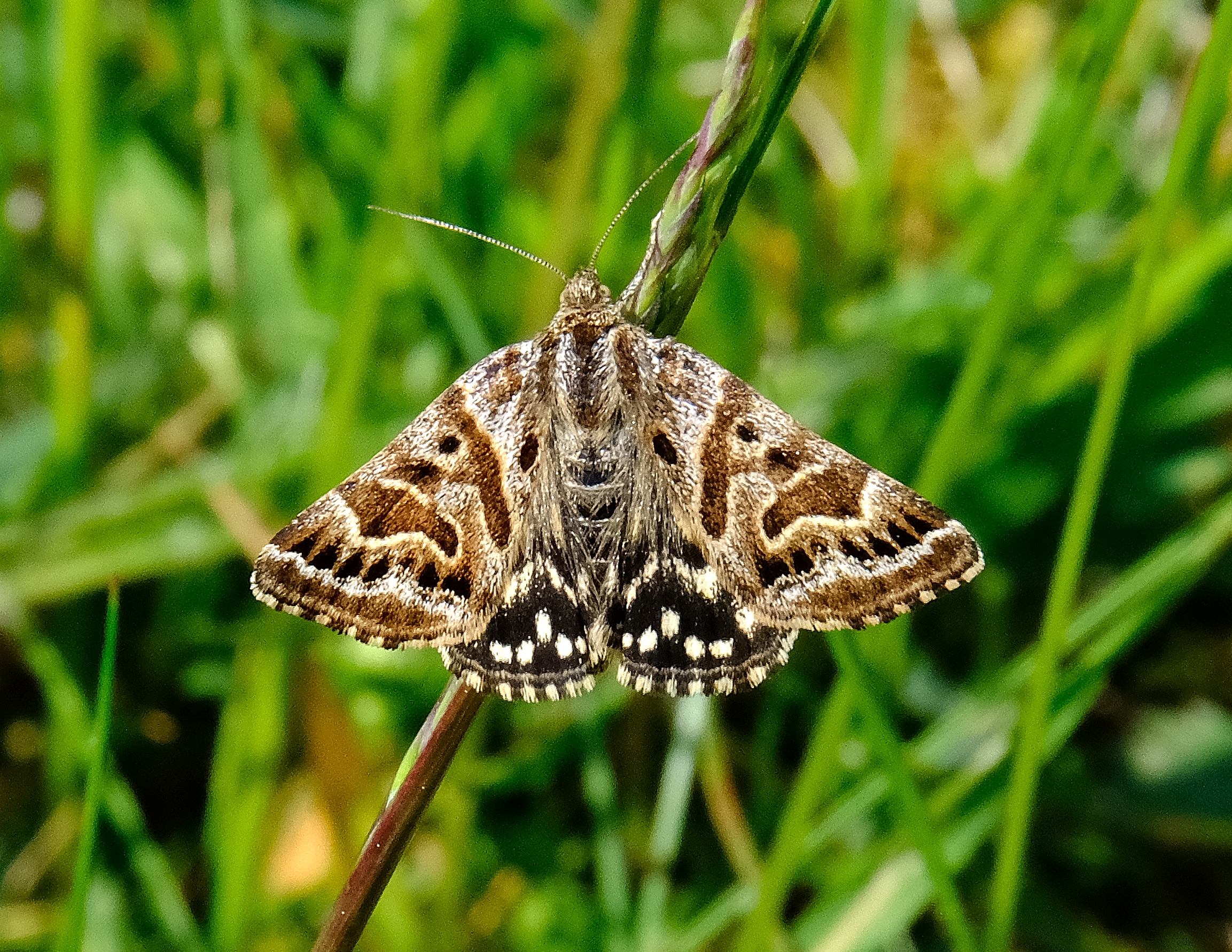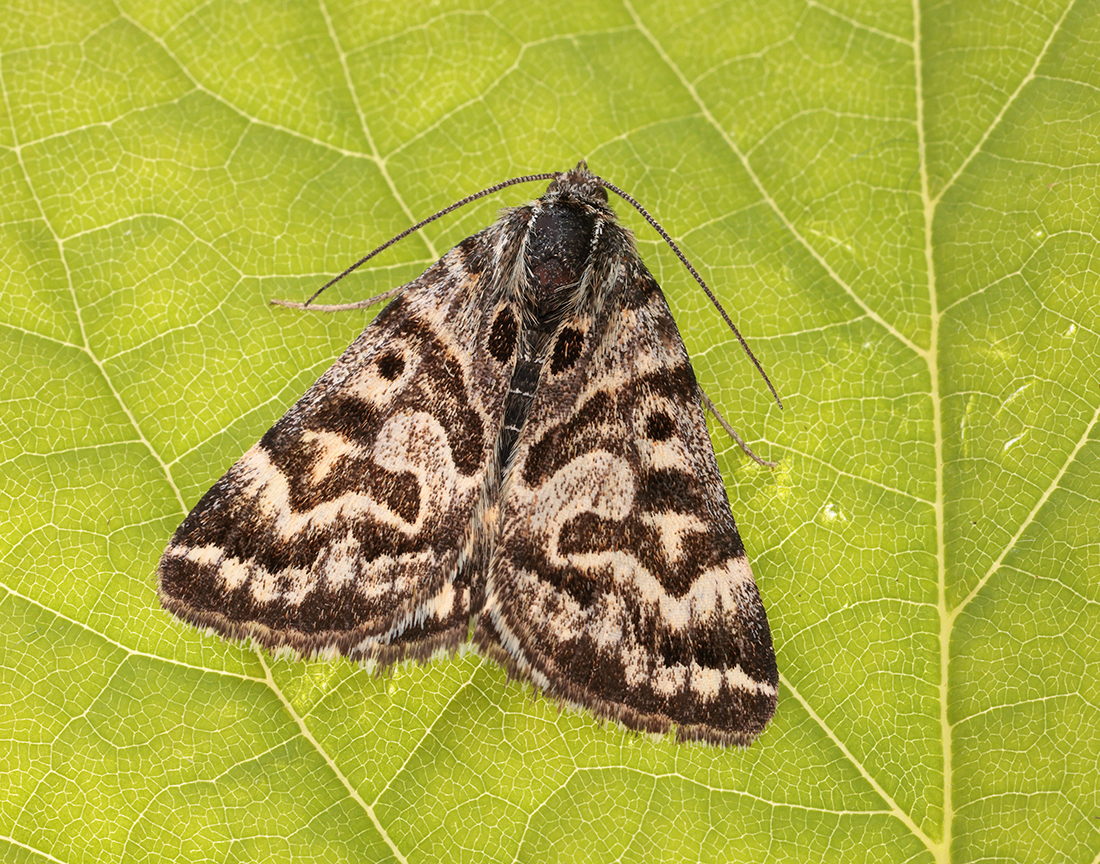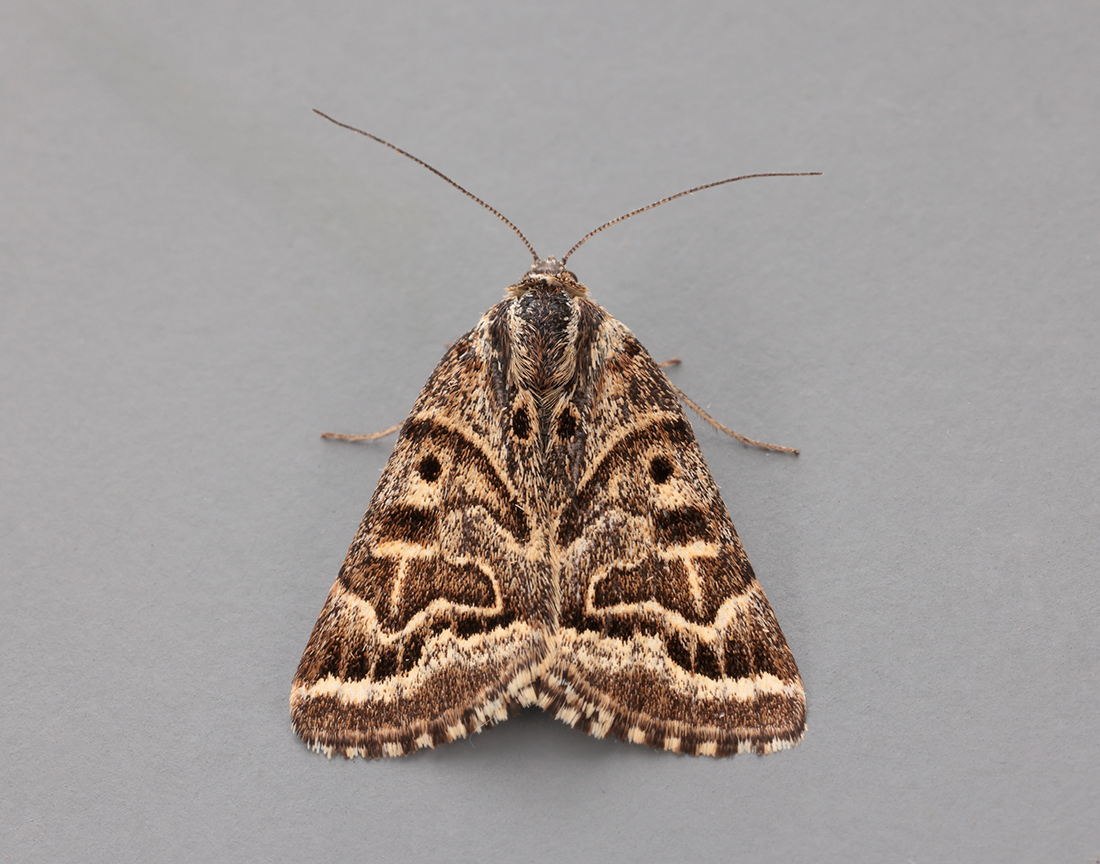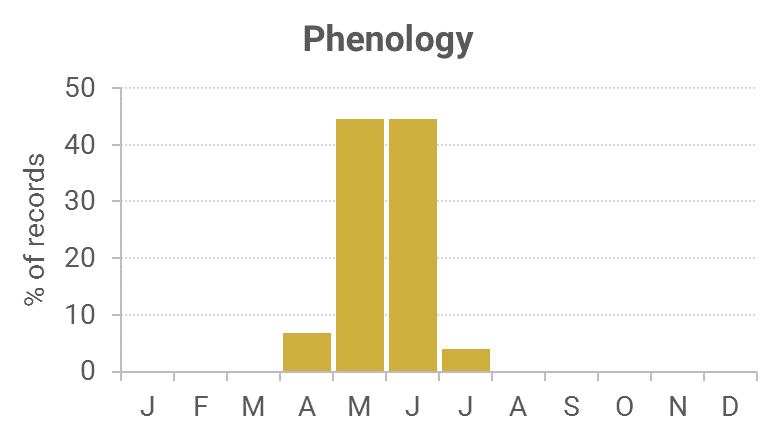Identification
The brown blotch edged with cream in the centre of the forewing, resembles an old hag and makes it very distinctive.
Life cycle
One generation. Overwinters as a pupa. Larvae are present late June to early September, being active at night, hiding by day.
Larval foodplants
Larva feed on grasses, White Clover and Common Bird’s-foot Trefoil.
Habitat
A wide variety of grassy areas.
History 1860-2010
The earliest notification of this species is published in Stephens (1829) with the Rev. William Little recording it at Raehills (VC72).
Somerville (1858) while on a visit to the Moffat area had found the larvae on grass during August of that year. Lennon (1863) had found it common at Dalskairth (VC73) while Robinson-Douglas (1874) stated it was not scarce on Almorness (VC73). R. S. Gordon (1913) had found it common and generally distributed in Wigtownshire on rough pastures and grassy slopes by the sea during May. Earliest date was 10th May 1901.
Sir Arthur Duncan (1909-84) during his lifetime had found it at Tynron (VC72). Archibald Russell (1944) during his stay at Gatehouse of Fleet during 1942-43 had found it locally on his walks.
From 1970 to 2010 there were forty records from widespread sites like Enterkinfoot, Browhouses, Lochmaben and Caerlaverock (VC72), Kirroughtree Forest, Mabie Forest, Rascarrel Bay and Port o’ Warren (VC73) and Torrs Warren, Bargrennan, Killantringan and Morroch Bay (VC74).
Mother Shipton gets its peculiar name from the wing pattern which is supposed to resemble an old witch by that name.





